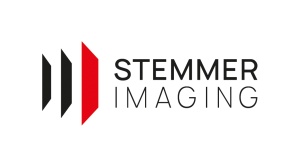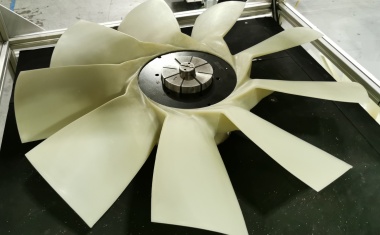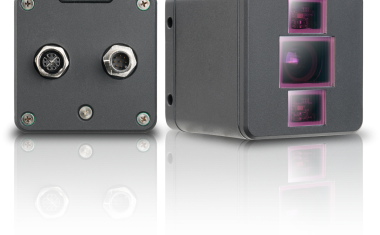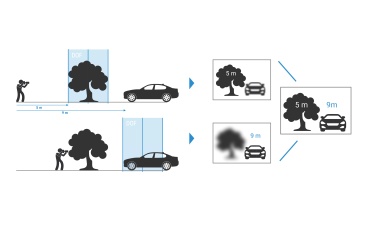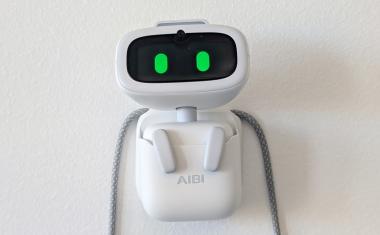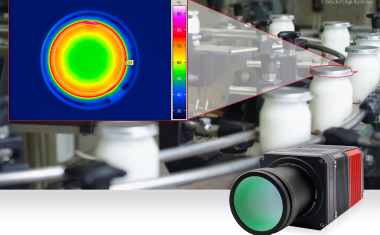Order in a High-Bay Warehouse with Machine Vision
When thousands of completely different parts need to be stored in a high-bay warehouse, size and weight of the goods meticulously have to be matched with the available storage space. The customized combination of legacy equipment with high-end cameras and imaging software overcomes the challenge.
Kiefel GmbH, a company that develops and manufactures thermoforming machines and welding systems for the processing of plastics, stocks up to 14,000 parts in the new high-bay system at its site in Freilassing. The warehouse has a storage area of around 1400 m² and a footprint of 120 m². A variety of machine vision components ensure that the company doesn't lose track of things.
More Space, More Comfort
"We wanted to achieve more storage space on a smaller footprint than we have up to now and at the same time make our warehouse more comfortable," says Robert Hammer, logistics manager at Kiefel GmbH in Freilassing, describing the essential goals behind the change to a high-bay system, which was put into operation in spring 2017. Since then, twelve high-bay towers have provided sufficient space at the company's main plant for the tidy storage of up to 14,000 parts.
Weight Control
Among the challenges for the layout of the system, according to Hammer, was that the type and size of the stored parts vary a great deal and there are virtually no limits to the variety of the goods to be stored. "It could be anything from labels, small switches and other small parts through to tools, motors and bulk materials," explains the Logistics manager. When assigning them to storage, not only the size, but also the weight of the stored parts plays a role, because the maximum permissible load for each storage tray, of which there are up to 48 per tower, is 850 kg. "For that reason it's not enough to just find a tray with an area that is large enough when new parts are to be put into storage. The weight of the items that are already stored on each tray must also be available as information in order to be able to assess whether or not a selected storage place is suitable for the parts to be added. The employee can only put the part into storage if the space allows for it and the maximum load of 850 kg per tray is not exceeded."
Every tray´s present weight information is calculated by high-bay warehouse manufacturer Kardex´s system via the current drawn by the motors that move the trays in and out. The difference between the maximum and the actual load is equivalent to the maximum weight that a new part may weigh when being put into storage. For simple handling, the currently stored weights are displayed to the operator in three traffic light colors, which he may define himself. The operator estimates the weight of a new part to be put into storage and then decides which tray he wishes to place it on.
"There is no standard system on the market that automatically recognizes free areas as well" Hammer explains. "At this point we developed a machine vision system with our partner the system integrator phil-vision, who helped us identify the free areas on the trays."
Always Up-to-Date
VIS.tray is the name of the resulting system that uses standard machine vision components from Stemmer Imaging. Phil-vision worked closely with Kardex on developing a system that integrates the optical systems in the high-bay towers in the best way possible. With the system, images of the present loading status of a tray are captured during the process of putting the tray into storage and the load weight is queried via the high-bay warehouse controller. These images and the loading information are stored in the database so that the warehouse worker can decide which tray has enough space to accommodate new parts simply by scrolling through the images.
If the sum of the already stored weight and the new parts to be added still lies below the maximum permissible load, the employee can request the selected tray simply by clicking on the input and output station on the connected touch panel PC, and then putting the new parts into storage. Shortly before the tray is put back into the high rack, a new image is captured and stored in the database, overwriting the previous image in the process. This way the images are always up to date.
Standard Components for Image Capture
The selection of suitable vision components for integration into the output stations of the high-bay towers wasn't trivial, since on the one hand the entire width of the tray measuring 300 x 80 cm had to be captured and on the other the space for installing the camera was limited, and the distance to the objects was relatively small. "Our first idea was to fasten one camera to each tower on a mobile axis, but that would have been too mechanically complex, and the image capturing would have taken much longer," recalls phil-vision´s founder Philipiak. As an alternative, therefore, a system was created with two color cameras equipped with fish-eye lenses. The images captured with this system are distorted due to the lenses. Philipiak developed an algorithm for this that initially compensates the distortion of the two images and then combines them. "These stitched images then show, undistorted and in color, the complete storage area of the respective tray and it is then saved into the system," he says, further describing the procedure.
When selecting the vision components, he - as a former employee - placed his trust in the products of his former employer, who obliged him by lending him a few products for the initial tests. "Stemmer Imaging offers this service to some of its customers," emphasizes sales engineer Christian Berg. "This offer is used very frequently, and represents an advantage for our customers, who can put their machine vision systems through their paces before installation in plants or machines, and thus be sure that the selected composition completely fulfills the requirements."
In each tower, the systems installed at the customer´s site feature two GigE Vision Genie Nano cameras from Teledyne DALSA, each with a fish-eye lens from Goyo, which were connected via GigE Vision to the embedded multi-touch PC from Vecow in the respective high-bay tower. Dedicated illumination was not required for this application as the light from the LED lamps integrated into the high-bay tower are sufficient to capture images in the necessary quality.
Philipiak chose the Genie Nano for several reasons: "This camera offers the required resolution of 1280 x 1024 pixels and the necessary speed to be able to capture the images within the 50 milliseconds that lie between the signal to drive a tray in and the actual mechanical procedure. In addition, its compact design allowed it to be installed easily above the input and output station of the tray and it was attractive in terms of price." The lenses with the short focal length were selected as they had a very small working distance, and the embedded PCs meet all the requirements of the application with their performance and interfaces. In addition, he chose the imaging library Common Vision Blox from Stemmer Imaging for the software that corrects the distortion and stitches the images together.
Custom User Interface
The control between high-bay and machine vision system proved to be complex during the installation. Close co-operation was necessary between the integrator and the tower manufacturer in order to implement the system in accordance with all of the customers wishes.
The integrator put the finishing touches to the system with regard to its operation by creating a specific user interface conceived by Kiefel's logistics manager Hammer: "The clear representation of the space and weight conditions on the trays makes a huge contribution towards free storage space being found very quickly for new parts that need to be put into storage. That saves my colleagues a lot of time and is undoubtedly one of the reasons why the new warehouse system has been accepted very quickly by everyone involved."
A further advantage of the new system that Hammer mentions is the fact that the machine vision system offers a fast solution to problems caused by the potentially incorrect operation by the employees. If a part is put into storage by mistake without being scanned first, this part can be found again easily and quickly: instead of driving all the trays individually to the output station, they can now sift through the current images of all 48 trays per tower on the monitor to find the missing part.
In Use Throughout Europe
In addition to the twelve high-bay systems in Freilassing, the integrator has now put two further systems into operation at the customer´s subsidiaries in the Czech Republic and Slovakia. On account of the successful use, further applications are already planned in Austria, Switzerland and the Netherlands.


